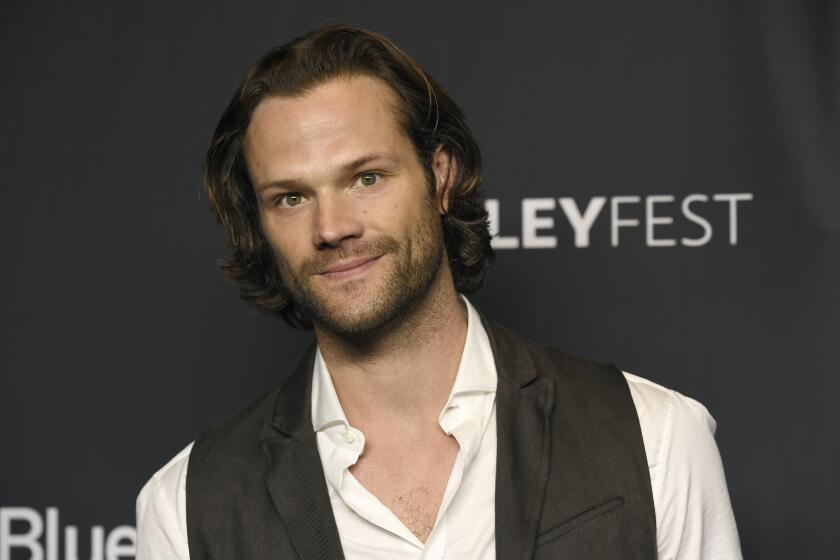Matlin Crosses a New ‘Bridge’
“Things have a way of turning out so badly,” Amanda Wingate says to her daughter, Laura, in “The Glass Menagerie.”
They’ve turned sour, too, for Marge Duffield (Lee Remick) and her daughter, Peggy (Marlee Matlin), whose hostile relationship fuels “Bridge to Silence,” the moving and intriguing but ultimately disappointing CBS movie airing at 9 p.m. Sunday on Channels 2 and 8.
Just as Amanda turns to the past as a crutch, so does Marge. And just as the physically lame Laura withdraws into her collection of glass animals, so does the deaf Peggy retreat into a world of silence after her injury in an auto accident that also takes the life of her husband and threatens to cost her custody of her toddler daughter.
Both stories also share dark ribbons of illusion and loneliness.
The similarities are intentional, for “Bridge to Silence” is in some ways an homage to “The Glass Menagerie.” Louisa Burns-Bisogno has punctuated her script with references to the Tennessee Williams play and completes the connection by having Peggy, an actress, play Laura in a Theatre of the Deaf production directed by her late husband’s best friend, Dan Burnell (Michael O’Keefe).
Peggy and her mother obviously have a tense and bitter history, each in her own way having failed to face up to Peggy’s deafness, which resulted from a childhood illness. The gap between them widens when Marge cruelly exploits Peggy’s crash-weakened state by trying to gain control of Peggy’s daughter and make her grandchild the hearing child that Marge never had. Although Peggy is the one rehabilitating, it’s soon apparent that Marge has the deeper problem.
The performances in “Bridge to Silence” are special. Matlin, an Academy Award winner for her work as another isolated deaf women in “Children of a Lesser God,” is radiant in her first role requiring her to speak extensively. Whether melting or raging, she is an infusing, energizing, unpredictable, exciting presence.
There is a natural curiosity about what she will sound like and whether her speech will be distracting. But the combined signing and vocalizing--in effect, she is speaking two languages simultaneously--adds to the intensity and the eloquence of her performance.
Remick brings intelligence to a difficult role, for the icy, self-serving Marge is a strange, ambivalent character whose inconsistency becomes a problem for the viewer. Believing her attitude shifts stretch credibility.
The supporting work is excellent--by O’Keefe as the loyal family friend who silently loves Peggy, and by Josef Sommer as Peggy’s father.
There are many nice moments here, and director Karen Arthur gives “Bridge to Silence” a lovely look. The movie’s problems are less in the directing than in the writing. Although Peggy is supposed to be recuperating, for example, she seems capable of retrieving her daughter from the clutches of the possessive Marge, whom Peggy so mistrusts. But she waits and waits and waits. If she was so concerned, why not go and sweep her up?
The ruination of “Bridge to Silence” comes with its “TV ending”--the inevitable, swift resolution and tidying up before the final commercial. It’s an ending that is poignantly executed by Arthur, and one that you may want in your heart of hearts, but it’s also one that rings false.
In television’s own glass menagerie, things have a way of turning out not so badly.
On another level, however, “Bridge to Silence” succeeds mightily by marking television’s continued maturity in portraying people with disabilities. Whether James Woods’ heartbreaking schizophrenic in the 1986 movie “Promise” or Matlin’s emotionally scarred Peggy in “Bridge to Silence,” good things are now occurring in an area where television itself was once creatively lame.
Prodded and educated by special-interest groups, the industry is getting smarter. More and more, easy stereotypes are falling away like old skins as characters with disabilities come to be depicted with greater honesty and intelligence.
This is so even for episodic television, as in a recent episode of “The Equalizer” that centered on a hearing-impaired woman. In that instance, however, “The Equalizer” stepped on a land mine, for that fine deaf actress, Phyllis Frelich, angrily protested the casting of a hearing actress in the role. Frelich, who has a cameo in “Bridge to Silence,” believes that only hearing-impaired performers should play hearing-impaired characters.
That’s an interesting thesis, one devaluing the traditional prerogative of the actor to play any role (a female as Hamlet, a white as Othello, and so on) in favor of the prerogative of a cultural minority to play itself.
Meanwhile, there are other chapters to be written and other bridges to be crossed in the evolution of disabilities on television.
The next stage will be stories in which the problems facing deaf characters are unrelated to their deafness, stories in which their hearing impairments are shown as not a burden, but as part of who they are.
The complete guide to home viewing
Get Screen Gab for everything about the TV shows and streaming movies everyone’s talking about.
You may occasionally receive promotional content from the Los Angeles Times.



